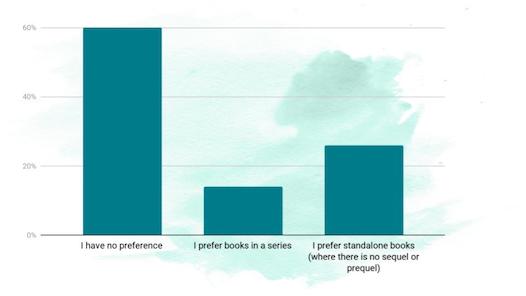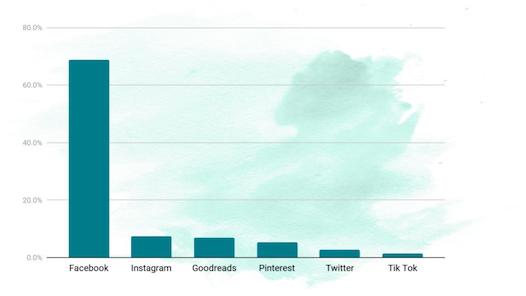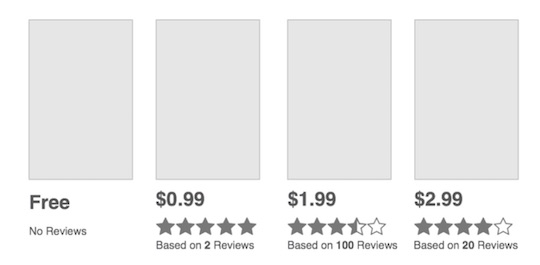We get a lot of questions from authors about how to write a book readers will love. Do they like series or standalone? Why do readers stop reading a book mid-way? Are reviews really that important? What better way to figure out what readers want than to ask them! We asked a few thousand readers what they like and don’t like about books and reading. We’ve rounded up their answers in this article and provided the key takeaways for authors.
Do Readers Prefer Books in a Series or Standalone Books?
Authors like writing in series. Marketers like marketing series. But how do readers feel? The overwhelming majority of readers are indifferent with 60% of respondents saying that they have no preference between series or standalone books. 14% said they prefer series while 26% said they prefer standalone books.
For authors, this is good news. It means that whichever way works for you, will work for a majority of readers. Successful authors tend to love the series model, and at Written Word Media, we do too. Offering the first book in a series for free or low-cost is a great way to hook a reader, and then draw them into your series.
The reader gets to try out a new author, and the author has an opportunity to gain a reader who will spur additional revenue month after month as they make their way through the series. It is easier to make the economics of writing and selling books work when you write in a series. If you have a series where the first book in the series is free, our Freebooksy Series Promotion (browse series promotional options for freebooksy here) is a good place to get your series in front of avid readers.

Some of the more enlightening information came in the open-ended comments section. One frustration that readers voiced with series books is simply the inability to find the other books in the series. That means that readers will gladly read your entire series, but only if it isn’t difficult for them to find the next book. When you are setting up your books in KDP or another retailer, make sure you keep series information consistent, so your readers can find the books they’re looking for.
Additionally, we saw lots of comments about cliffhangers. Readers hate them! It’s okay for your book to gently lead into the following book, but wrap up the story so the reader is satisfied by the last page. Cliffhangers lead to unsatisfied readers, and unsatisfied readers lead to bad reviews and a decline in follow-on sales!
Why do some readers love series? For most, it’s the characters. One reader summed up the fear of falling in love with a character but only having a small amount of story about them: “I want to invest in the characters and know I’ll be seeing them again.”
Another reader said that reading a series reminded them of “visiting beloved friends.” A series is a great way to build a connection between your characters and your readers, and turn readers into fans.
What Makes Readers Put Down a Book?
In the era of Kindle Unlimited, where authors are paid by the page read, every page that a reader reads counts. With this in mind, we wanted to find out some of the biggest story no-nos according to readers, so we could help you avoid them. We asked readers what makes them stop reading a book, and the results were informative. We asked this as an open-ended question so as not to bias the poll. The most common theme among responses was the word BORING.
Readers want a plot and characters that keep them engaged. Also mentioned frequently were uninteresting characters and overdone descriptions. Farther down the list, but still worth mentioning were grammar mistakes and spelling errors.
For authors, this means plot and characters need to be a primary focus. It is critical to have a plot that progresses quickly to hook the reader and keep them reading. If you find there are slow parts to your story, try workshopping these scenes with an author friend until you’re confident readers will get hooked and stay engaged.

Reading through the comments, another big takeaway was that readers like reading a book that is inline with their expectations. If there’s going to be explicit sex scenes, make sure that’s clear up front. Do the same if your book has a lot of violence. If it’s part of a series, make sure to tell the reader that, so they can expect that some plot threads will be left untied at the end. Readers want to be surprised by how a story unfolds, but not confused by a book that is different from what they expect.
Make sure your cover and your book description give the reader an accurate picture of what type of book they will be reading.
Do Readers Want to Interact with Authors?
When we asked readers if they would want to interact with the author of the book they are reading, the responses fell into relatively even groups.
The most common answer from readers was “not sure” at 37%. Close to that was “yes” at 36%, and 27% of readers surveyed said they wanted no interaction with authors.
For authors, this is helpful in setting expectations for engagement. Only a third of readers actively want to interact with authors, many other readers just aren’t sure, and a solid amount also don’t want to interact, even if they love an author’s work.
So, if you are focused on engaging with your readers, know that some just won’t want to, and that’s not a problem.
We asked readers what their preferred interaction method is, and the responses were overwhelmingly digital. The top choices were email (75%) and social media (52%). That said, many readers would be interested in more intimate types of interaction like texting (32%) or in person meetups (47%).
Authors should feel comfortable engaging readers over social media, and many of you already do. Email is the preferred method of communication for most readers, so building a mailing list is something every author should invest in.
Which Social Media Platforms do Readers Use?
With so many social media platforms, it can be overwhelming to try to post to all of them. So, if you’re trying to decrease your social media workload, focus on where your readers are.
Granted, your audience is a specific subset of readers, so trying different platforms and techniques to see what gets the most engagement is the best plan. But these survey results can help give you an idea on where to start.
The most popular platform among readers surveyed? Facebook, and it’s not close. We know authors love Twitter, and it’s a great place to meet other Authors and engage with the wider author community, but Facebook is where the readers are. 69% of respondents chose Facebook as their preferred social media platform. If you are pressed for time and need to spend time updating your social media presence, focus on Facebook first.

Do Readers Care About Reviews or Price?
We asked readers to pick a book based on just a few limited factors to try and understand how reviews and price impact the decision making process. The answer to this question was dependent on the type of audience you are after, and your goals for the book. We found that readers that subscribe to our different brands answered this question a little differently. Readers were asked to choose from the four options below:

The readers on Freebooksy love free books. They are happy to choose a free book with no reviews over all others. In fact 50% of them would pick a free book with NO REVIEWS over other the options pictured above. The next most popular option was the $0.99 book with 2 five star reviews. And the third most popular option for Freebooksy readers was the $2.99 book with four stars on 20 reviews.
Our Bargain Booksy audience enjoys a great deal but understands that good books often come at a price. That audience still liked the free book with no reviews, with 37% saying that would be their top choice, but only slightly less popular was the $0.99 book with two 5 star reviews.
A takeaway here is that in the early days of a book when it does not have a lot of reviews, you may need to lower your price in order to attract readers. If you don’t have any reviews on your book and your goal is to get those first few reviews, try running a Freebooksy feature. It will drive free downloads of your book which will get it in the hands of lots of potential reviewers.
The takeaway for authors is that reviews and price both matter to readers. When your book has more reviews you can begin to attract readers at a higher price. If you aren’t getting traction at $4.99 or $3.99 try lowering your price and running promotions to boost those reviews. After you get more reviews, you can start raising your price.
Your Book Description Matters
When asked to rank the importance of several factors when choosing a book, 57% of readers surveyed said the book description was the most important factor. Next most important was price at 37% and author at 23%.
Another finding was that the readers surveyed view review rating as more important than the total number of reviews. In fact, number of reviews was mostly likely to be ranked as “least important” by readers.
One important thing to note is that your description and reviews are often closely linked. As we observed earlier when identifying what turns readers off from a book, setting the correct expectations for your book is critical. If a reader is caught off-guard by violence, sex or the type of ending, they could leave a bad review. So, it’s important that your description both excites readers and sets the correct expectations.
Summary
We hope this has helped you gain some insight into the minds of readers. The major takeaways from our reader survey are:
- Readers do not have a strong preference for series vs. standalone books. It is easier to become a profitable author when you write in a series and given that readers do not have a preference we recommend starting with the series model. If you are writing a series, make all books in your series easy to find and avoid cliffhangers at the end of books.
- Make sure your book is not boring. Keep the plot moving quickly and spend time developing your characters.
- Be honest about your book. If it’s a series, be up front about it. Sex scenes, bad language, genre fit – make sure all those things come through on your cover and book description, so readers are not surprised by what they find inside your book.
- Interact with your readers through digital channels like Facebook and Email newsletters. Readers want to hear from you when you use their preferred communication channels.
- If you have to pick, spend your time promoting and engaging on Facebook as opposed to other social sites.
- Reviews matter. Get reviews by running a free promotion. As you get more reviews you can charge more for your book and run successful bargain promotions.
Do you have any burning questions for the reader community? Let us know in the comments and they just might make their way into our next survey!

